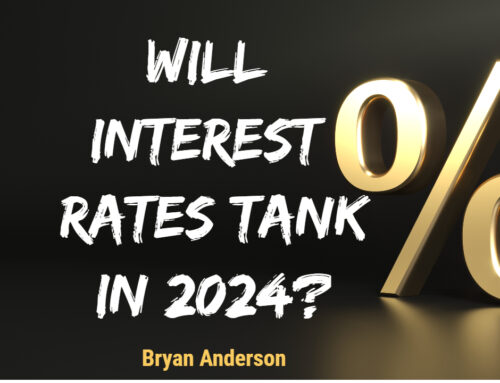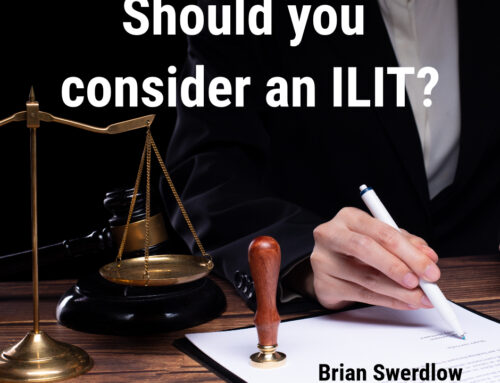By Sean Sparkman
Now that our economy is experiencing severe volatility, the path to a safer, more prosperous retirement may not be as apparent to you as it was in the past. Company pensions are, for the most part, long gone, and most people won’t be able to live on Social Security alone.
In the 21st Century, you are expected to take charge of your finances with limited assistance and to understand everything about how money works. This situation is less than ideal and a bit scary for most of us. For example, the switch to so-called “defined contribution” plans such as 401ks and IRAs has not gone well for many Americans, who sometimes lack the necessary skills to take full advantage of these retirement accounts. Multiple polls indicate 70% or more of Americans believe they haven’t saved enough and will run out of cash before they pass away.
If you are age 50 or older and thinking of retiring in the next decade, you might want to consider adding additional income streams while you’re still working to help you avoid tapping into your retirement savings too soon. In addition to conventional ways of earning extra money, such as taking on side gigs, starting an online business, or requesting more hours at your present job, you might also add passive income.
Passive income, which some refer to as “mailbox money,” is the holy grail for many of us struggling to make ends meet or preparing for the day when we can no longer work or no longer want to work. Passive income promises greater peace of mind by providing you with one or more sources of predictable income to augment your Social Security benefits.
Passive income flows consistently into your accounts without you actively earning it. Although you might have to work extra diligently to create this cash flow in the beginning, the idea is that once you’ve built passive income generators, you can relax more and work less.
There are many types of passive income, each with pros, cons, and limitations. You probably know about income such as profit income, interest income, dividend-paying equities, real estate rental money, and royalties. Unless you’ve been extraordinarily fortunate or have inherited a reliable passive income asset from your family, you will have to build these income generators yourself. While you are still working is the perfect time to sit down with a seasoned retirement planner and discuss all your passive income options.
What are the benefits of adding passive income to your portfolio?
Multiple income sources, including passive income, have practical and psychological benefits for older Americans. When all your retirement eggs are spread around in various baskets, you will experience greater financial security and less anxiety.
Having Plan B in the form of passive income often contributes to increased investing confidence. For instance, if you know you have at least one income stream to complement your Social Security payouts, you might be less concerned about risk. Increased risk tolerance might allow you to address shortfalls in your retirement savings by adding riskier investments to your portfolio. It’s always wise to meet with your planner to get advice on any course of action and help clarify your relationship with money. That way, you won’t make mistakes with your finances from which you have no time to recover.
As you age, you may discover your needs and goals at the beginning of your retirement planning phase have evolved. Your health may now be your top priority, and you may worry about incurring medical expenses not covered by Medicare. In addition to the steady growth that reliable passive income sources may create, you gain greater flexibility to address emergencies. This cash flow allows you to pivot quickly should your needs and goals change unexpectedly.
Individuals getting mailbox money also report that this income gives them an increased sense of purpose and feelings of accomplishment. They feel more in control of their financial well-being and more prepared to face the challenges of growing older.
So, how can seniors create passive income?
There are many ways that retirees and pre-retirees can generate reliable passive income. Five of the most popular methods are:
- Purchasing dividend-paying stocks. An increasingly popular investment choice for those seeking passive income is dividend-paying stocks. These equities are typically more conservative, “blue chip” type companies with established histories of paying dividends to their stockholders. Carefully chosen, these corporations can give senior investors more stability. As the company’s earnings grow, dividend payments may also increase, giving you some benefits of a market upswing. It would help if you understood that all investments carry some risks, and dividend stocks are no exception. Like all stocks, dividend stocks have some market risk. This means the value of your stocks can fluctuate when there are market changes. Your dividend-paying stock portfolio has the potential to lose or gain money depending on market conditions. Dividend-paying stocks may also carry credit risk, which is the possibility that a company will experience financial issues that prevent it from issuing dividend payments. For instance, a business’s performance could deteriorate or encounter other challenges that preclude issuing dividend payments. Reinvestment risk may also occur when you purchase a dividend stock. This situation occurs when the value of a stock is affected by changes in interest rates. Say, for instance, interest rates rise. The value of your dividend stocks might decline as more investors gravitate to higher-yielding vehicles, such as bonds.
- Real estate. Real estate’s ability to create passive income is well-known among savvy investors. Many seniors make exceptional cash flow by purchasing apartments, single-family rental homes, or vacation properties. Since housing demand tends to stay constant, long-term investment in real estate may give your portfolio greater stability. However, as with other passive income generators, real estate has inherent risks and is not for everyone. Unless you invest in what is known as a real estate syndication or hire an expensive property management company, being a landlord could mean you might wind up unclogging a toilet at 3 AM or dealing with thorny tenant issues. Not many retirees I know want these kinds of hassles in their lives.
- Peer-to-peer lending (P2P). A relatively new industry, peer-to-peer lending is another increasingly popular way to earn money. Online platforms provide a means for individual investors to lend money to small businesses or entrepreneurs in exchange for a return on the investment. P2P may be a viable option for some investors. Understand that peer-to-peer lending does have risks, such as the potential for borrowers to default on their loans. Also, because it is a new approach, P2P is subject to evolving regulations which might affect the platforms and make it a less promising way to create passive income.
- High-yield savings accounts or certificates of deposit (CDs). Some seniors choose high-yield savings accounts and CDs because they are low-risk passive income sources. CDs and high-yield accounts typically offer higher interest rates than you would get from traditional savings accounts. The interest also compounds, helping your money grow more efficiently. A CD has both a fixed term and a fixed interest rate. CD interest rates are often higher than you get with savings accounts. However, they are less liquid since they require the account owner to keep the money in the CD for the entire term, which ranges from a few months to several years.
- Annuities can create a guaranteed income stream you won’t outlive. A popular way of adding income streams is an annuity. Annuities are contracts with an insurance company that provide retirees contractually guaranteed income either for a specified time or for life. There are several different kinds of annuity products on the market, including fixed, variable, and indexed annuities. Each annuity contract has its own pluses and minuses. If you are considering adding an annuity to a retirement portfolio, you should meet with an annuity specialist to ensure you thoroughly understand the product and how it fits into your retirement income strategy.
Sean Says: When it comes to planning for the time when you no longer work, it’s never a bad idea to have a Plan B or even a Plan C. Multiple sources of income, especially passive income, could mean the difference between achieving a safe and sound retirement and experiencing anxiety and stress in your later years. Even if you already have a money blueprint, I am always happy to provide a second set of eyes, review your portfolio, and make suggestions to help ensure there are no gaps that might cause you problems later.
Check out my new website here at https://www.pathfinderswealth.com/
or call my office for a free consultation: (248) 487-9148









